|
|
|
|
| Missing In Action (MIA) | Prisoners Of War (POW) | Unexploded Ordnance (UXO) |
| Chronology | Locations | Aircraft | Ships | Submit Info | How You Can Help | Donate |
|
 5th AF August 30, 1943 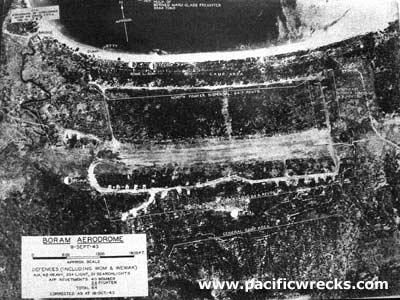 5th AF September 9, 1943   345th BG Oct 16, 1943 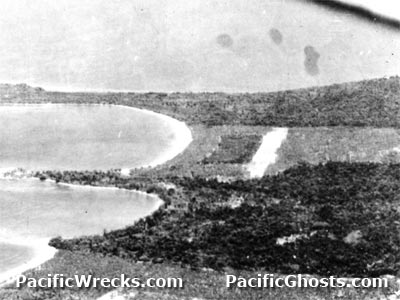 5th AF November 18, 1943 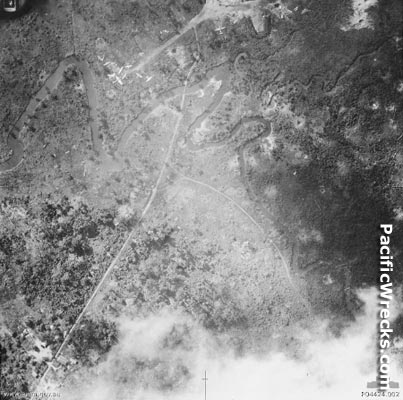 RAAF May 14, 1944 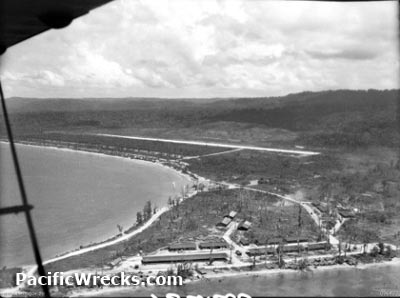 RAAF Sept 12, 1945  Albert Cross 1965  Ray Fairfield 1966 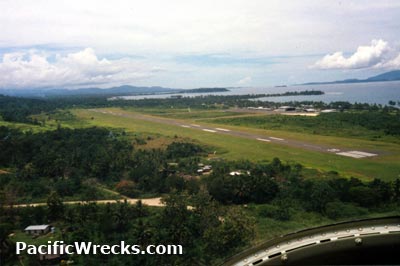 Air Niugini 1990 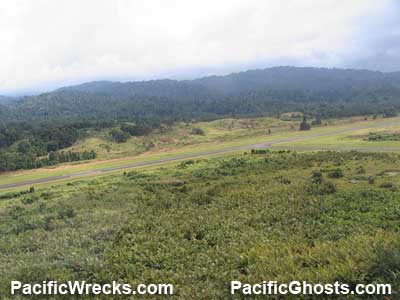 Justin Taylan 2005 |
Location Lat 3° 35' 2S Long 143° 40' 9E Boram Airfield is located slightly inland and parallel to the north coast of New Guinea. To the north was Boram Plantation and beyond Boram Beach a hard sand beach roughly 10' wide at high tide and 60' wide at low tide bordering Boram Bay. To the west is Boram (Cape Boram) and beyond Wewak. To the east is Cape Moem. Prewar and during the Pacific War located in the Territory of New Guinea. Today located in Wewak District, East Sepik Province (ESP) in Papua New Guinea (PNG). Still in use today known as Boram Wewak Airport, also known as Wewak International Airport or Wewak Airport. Prewar Boram Plantation was established at this location planted with coconut palm trees harvesting copra. Construction On December 18, 1942 the Japanese Army occupied the Wewak area and soon afterwards began constructing a military airfield at this location with a single runway parallel to the coast oriented roughly east to west. The northern side of the runway, nearest to the shore were twenty-four fighter revetments and dispersal areas. To the northeast of the runway were six bomber revetments. The southern side of the runway was a bomber dispersal area and with twenty-four revetments and beyond a camp area. By September 9, 1943 the runway measured 4,600' with forty bomber and twenty-four fighter revetments. Wartime History The Boram Airfield area was defended by forty-two heavy anti-aircraft guns, 33+ light anti-aircraft guns plus twenty-one searchlights in the vicinity of Boram to Cape Wom. Starting in early 1943 used by the Japanese Army Air Force (JAAF) as a military airfield for fighters and attack aircraft, plus occasionally bombers and transports. Japanese units based at Boram Airfield 68th Sentai (Ki-61) Vunakanau June 1943 - October 1943 Manila returns November 1943 - March 1944 Hollandia 78th Sentai (Ki-61) Vunakanau July 1943 - September 1943 Manila returns October 1943- March 1944 Hollandia 13th Sentai, 2 Chutai, 3 Chutai (Ki-45, C. O. Lt. Ashi) Rabaul July 8, 1943 Starting in late April 1943, Allied aircraft began bombing and low level strikes against Boram Airfield until late August 1944. These attacks destroyed many parked aircraft. By late April 1944 the airfield was deemed to be neutralized by bombing. American missions against Boram April 10, 1943–November 8, 1944 Allied aircraft continued to bomb Boram Airfield as a neutralized target until May 1945. Over two years of bombing left the area pockmarked with bomb craters that filled with rain water. By late May 1945, the Australian Army 2/8 Infantry Battalion supported by tanks advanced from the west. On May 20, 1945 the Australians reached the Boram Airfield area but encountered heavy opposition in the hills to the south of the runway. On May 22, 1945 they secured the the Boram Airfield. Australian Usage During June 1945, the runway was repaired and was used by the Australians to a limited capacity for the remainder of the Pacific War. During the Australian Army occupation of the area, Boram beach became a rest and recuperation (R&R) area were servicemen could swim and relax. Keith W. Bryant, VX 85794 AIF 7th Mechanical Equipment Co. A.I.F: "We landed in Wewak, in June 1945, after waiting at Langemak Bay, (Finchhaven) for 3 Days until the ground forces cleaned out the Japanese from the beach and Coconut plantations around Boram, so that we could land with our personnel and heavy gear to start the Refurbishing of the area. Surprisingly the first person we saw on landing was a Salvation Army person with an ice cold drink and biscuit, what a welcome to a war! We were fully equipped with brand New "International" earthmoving machinery, plus others of such. We improved the roads in the area, and building Cape Wom camp and the refurbished the Boram Airstrip. We leveled a Hill of coral called Boram Point for the material for resurfacing the runway, and that is why in the 1945 photos it stands out so much. There are a number of Japanese planes buried under the the edges of the runway, some still had bombs, defused of course, attached. It was a puzzle of how to push the planes over the edge into the swamps, (with their bombs), our operators were a little shy, and decided to use reins from behind the Bulldozers to engaged the clutch, this was successful but very slow, and as there were some natives around watching the "action" they said they would love to "Have a Go", and so, with a dual operation the job was completed without any major accidents." Postwar On October 26, 1945 in the morning, B-24M Liberator A72-189 landed at Boram Airfield with passenger General Thomas A. Blamey to inspect troops of the 6th Division. This was the first landing by an Allied heavy bomber at Boram Airfield. Today Still in use today as Boram Wewak Airport as a civilian airport and airport of entry. Also known as Wewak International Airport, Wewak Airport or Boram Airport. The single runway oriented 28/10 measures 5,234' x 98' (1,569m x 30m) surfaced with asphalt. Airport codes: ICAO: AYWK and IATA: WWK. Serviced by Air Niugini and smaller secondary airlines and helicopters. To this day, bomb craters still pockmark the area and are clearly visible during take offs and landings. References NAC - Boram Wewak Airport Anti-Aircraft Ridge To the south is a low ridge that offers a commanding view of the of Boram Airfield area. During the war, this ridge was heavily fortified with batteries of Type 88 75mm anti-aircraft guns emplaced in gun pits. On October 16, 1943 a dramatic series of low level photographs was taken over this ridge by 345th Bomb Group B-25 Mitchells. After the war, at least six guns remained at this location. During 1969, two 75mm guns were removed from this ridge for the Cape Wom Memorial Park at Cape Wom. In 1971 another Type 88 75mm anti-aircraft gun recovered and is displayed at Yasukuni Museum. Today, only three 75mm Type 88 anti-aircraft guns are still located on the ridge in their positions. Ki-43 Oscar Midway down the strip, on the south side is the wreckage of an upside down Oscar in a bomb crater. It is partially submerged in water during most of the year. At one point, the airfield maintenance staff attempted to remove the plane, but it would not budge. A-20G Havoc 43-21428 Pilot Peterson crashed November 10, 1944 Contribute
Information Last Updated
|
Topographic Map July 1944 Map Fallingrain View on Google Earth Photo Archive |
| Discussion Forum | Daily Updates | Reviews | Museums | Interviews & Oral Histories |
|